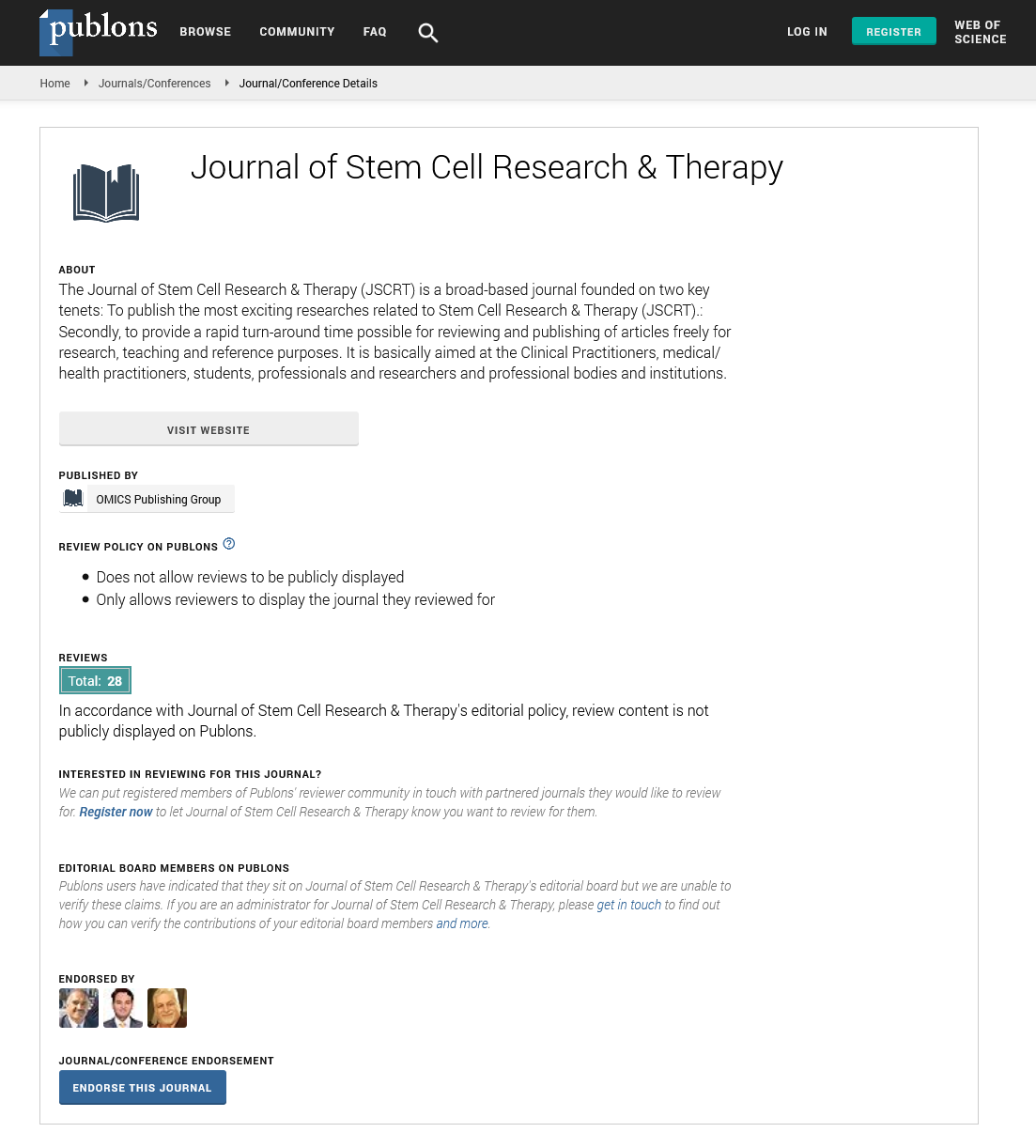Indexed In
- Open J Gate
- Genamics JournalSeek
- Academic Keys
- JournalTOCs
- China National Knowledge Infrastructure (CNKI)
- Ulrich's Periodicals Directory
- RefSeek
- Hamdard University
- EBSCO A-Z
- Directory of Abstract Indexing for Journals
- OCLC- WorldCat
- Publons
- Geneva Foundation for Medical Education and Research
- Euro Pub
- Google Scholar
Useful Links
Share This Page
Journal Flyer

Open Access Journals
- Agri and Aquaculture
- Biochemistry
- Bioinformatics & Systems Biology
- Business & Management
- Chemistry
- Clinical Sciences
- Engineering
- Food & Nutrition
- General Science
- Genetics & Molecular Biology
- Immunology & Microbiology
- Medical Sciences
- Neuroscience & Psychology
- Nursing & Health Care
- Pharmaceutical Sciences
Perspective - (2022) Volume 12, Issue 6
Application of Plant Stem Cells in Cosmetics
Received: 31-May-2022, Manuscript No. JSCRT-22-17271; Editor assigned: 03-Jun-2022, Pre QC No. JSCRT-22-17271(PQ); Reviewed: 21-Jun-2022, QC No. JSCRT-22-17271; Revised: 29-Jun-2022, Manuscript No. JSCRT-22-17271(R); Published: 07-Jul-2022, DOI: 10.35248/2157-7633.22.12.538
Description
Plant regeneration is a one of a process at the cellular and tissue level. Plant stem cells, like animal stem cells, contain capabilities that help stimulate and repair plants following an injury. Plant stem cells' unique qualities have recently sparked attention and research, both in terms of generating novel cosmetics and examining how these extracts or phytohormones may affect animal skin.
Many skin care companies promote their products by claiming to use stem cell technology. Image Skincare offers an antiaging serum, a lightening cream, a lightening cleanser, and a lotion. Gardenia, echinacea, lilac, and orange stem cells are also offered in stem cell products like Dermaquest Stem cell 3D Hydrafirm serum and Peptide eye firming serum. In truth, practically all cosmetic businesses that claim to use stem cells actually use stem cell extracts rather than live stem cells in their products.
Plant stem cells utilised in skin care have been shown to have potential as skin protectants, antiaging, and antiwrinkle treatments, but the stem cells employed in cosmetic compositions are already dead. Stem cell extracts cannot function in the same way as living stem cells. Antioxidants and active extracts from stem cells are said to provide smooth and firm skin. To reap the full benefits of stem cells and have them operate as promised in skin care products, they must be introduced as live cells and maintained as such throughout the cosmetic formulation. Another problem to be addressed is incorporating stem cells in a carrier that allows the cells to penetrate deep into the skin and deliver an actual cosmetic advantage. Plant stem cell therapy must go in the right direction in order to realise its full potential in skin care. This could happen in the next 20 years, but any cosmetic that claims to be anti-aging because of plant stem cells is currently about as effective as all the skin treatments that don't contain stem cells.
Plant growth and regeneration are regulated by a complicated phytohormone cascade. There is still a lot to learn about how phytohormones govern the regeneration process and whether this may be applied to human tissue regeneration. The active elements in the phytohormone cascade that act on human stem cells and tissues are of particular interest and focus in plant stem cell research in the future. The purpose of this study is to encourage more research into plant stem cell biotechnology and its impact on human skin, as well as to improve present cosmetics with more natural, safe, and effective chemicals.
Plants have long been employed as a cornerstone in ancient herbal sciences such as Ayurveda and Oriental Chinese Medicine for the treatment of chronic diseases, acute inflammation, and healing. The goal of modern cosmetic scientists is to integrate data from ancient methods with evidence from modern science to see where the use of plants in cosmetics might improve delivery to the skin in a more effective, safer, and tailored manner.
Conclusion
In this vein, plant science is still in its infancy, and research into herbal biotechnology and physiologic effects on the skin could lead to novel cosmetics possibilities. The discovery of phytohormone actives that act directly or modulate human tissue healing pathways will be an exciting element of future research. In the future, it may be feasible to combine and deepen our understanding of the foundations of Ayurvedic and traditional medicine, as well as their usage of plant herbs, in order to cast more light on cutting-edge scientific research.
Citation: Chiang T (2022) Application of Plant Stem Cells in Cosmetics. J Stem Cell Res Ther. 12:538.
Copyright: © 2022 Chiang T. This is an open-access article distributed under the terms of the Creative Commons Attribution License, which permits unrestricted use, distribution, and reproduction in any medium, provided the original author and source are credited.

